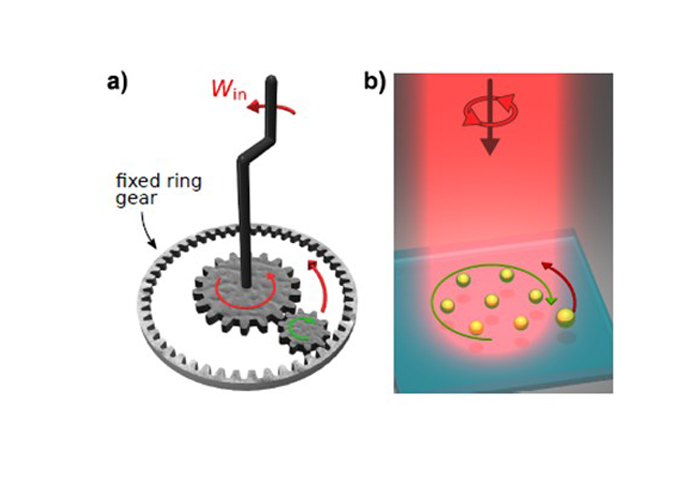
Title: Researchers Develop Largest On-Chip Quantum Entanglement Network—A Significant Progress in Quantum Technology
In a remarkable advancement that signifies a substantial progression in quantum technology, researchers from Peking University and the Chinese Academy of Sciences have presented the largest quantum entanglement network ever constructed on a single chip. By effectively connecting 60 unique modes of light within a compact photonic circuit, this achievement introduces a functional and scalable architecture with significant consequences for ultra-secure communications and the forthcoming generation of quantum computing.
What Is Quantum Entanglement?
Quantum entanglement refers to a phenomenon where particles become so fundamentally intertwined that the state of one instantaneously affects the state of another, regardless of the distance separating them. Albert Einstein famously termed it “spooky action at a distance.” In quantum networks, this unusual yet powerful effect is essential for the secure transmission of information and the execution of complex computations that exceed the boundaries of classical physics.
Instead of entangling single particles such as photons or atoms, the research team emphasized linking entire light modes—essentially, frequency channels within a beam of light. This led to the creation of so-called “cluster states,” extensive collections of entangled elements that can be utilized as resources for universal quantum computation and communication protocols.
The Innovation: A Quantum Breakthrough on a Chip
The landmark achievement, published in the journal Light: Science & Applications, relies on an optical microresonator—an exceptionally small, ring-shaped device that traps light and facilitates interactions between various frequency components. The design is no larger than a human fingernail, yet it successfully entangled 60 frequency modes of light, producing intricate patterns, including both linear chains and two-dimensional grids.
Using synchronized lasers and advanced photonic engineering, the scientists established these connections deterministically—meaning they could control and duplicate the entanglement with accuracy, unlike previous random or probabilistic approaches. This results in a significant enhancement in scalability and a marked reduction in system complexity.
Performance Breakthrough: Unprecedented Squeezing Levels
One of the primary successes of this platform is its superior-quality entanglement, assessed using a metric referred to as “squeezing.” Here, squeezing denotes the diminishment of quantum noise beneath the standard quantum limit—a crucial measure of how beneficial a quantum state is for computational or communication tasks.
The team accomplished squeezing levels of up to 3 decibels (dB), marking a record-breaking performance for photonic chips. This value is over ten times larger than that of previously demonstrated on-chip quantum entanglement networks, placing the new system in a category of its own regarding both scale and quality.
Compact and Scalable Quantum Hardware
What distinguishes this research from earlier entanglement experiments is not just the scale but also the configuration. Traditionally, creating entangled states necessitated complex setups sprawling across expansive laboratory benches, equipped with sensitive optical components and painstaking manual alignment.
In contrast, the new chip-based system condenses all functionality into a single integrated platform, paving the way for practical quantum devices. When combined with advancements in photonic integration, these chips—termed “quantum microcombs”—could be incorporated into commercial systems, giving rise to a new breed of quantum sensors, communication devices, and processors.
Implications and Future Applications
The scalable, high-fidelity nature of this quantum photonic chip marks a foundational stride toward constructing real-world quantum networks and computers. These advancements promise transformative advantages:
– Ultra-Secure Communications: Quantum entanglement provides theoretically unbreakable encryption through protocols like quantum key distribution (QKD), vital for safeguarding sensitive data.
– Powerful Quantum Computing: Cluster states serve as the backbone for “measurement-based” quantum computation, a framework that could lead to fault-tolerant, large-scale quantum processors.
– Precision Sensing: Entangled states improve sensitivity in measurements of gravitational waves, magnetic fields, and biomedical signals more accurately than conventional technologies.
As manufacturing techniques evolve and integration with other quantum and classical systems enhances, we can anticipate these photonic chips to be utilized in environments ranging from data centers to satellites.
Conclusion: A Quantum-Enabled Future
The development of the world’s largest on-chip entanglement network highlights not merely a technological victory but also a conceptual achievement in the quest for quantum supremacy. By accommodating extensive quantum states within a fingernail-sized chip, the research advances the boundaries of possibility and begins to outline a framework for the quantum-enabled devices of the future.
Stay tuned as the era of practical quantum technology approaches closer from theoretical potential to real-world application. With further breakthroughs in miniaturization, fidelity, and integration, the quantum revolution may soon be just a chip away.
Discover more quantum breakthroughs—subscribe to SciChi for the latest updates delivered straight to your inbox.